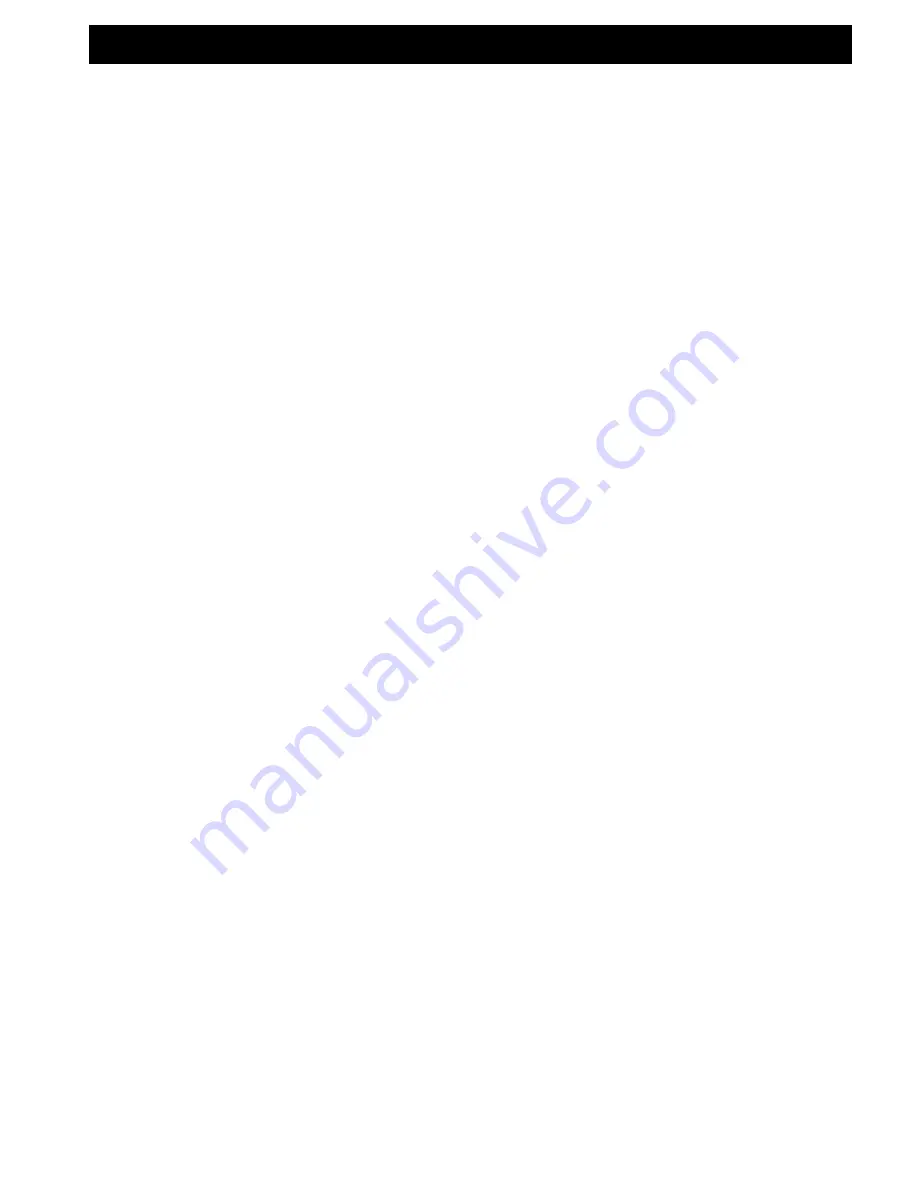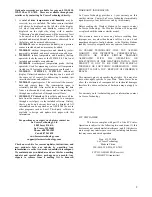
1
Tips for installing and using La Crosse Technology’s Professional Wireless Weather Stations
Models WS-2010, WS-2210, WS-7015
Setting Up
1.
Insert magnets in the outdoor sensors (three)
a.
Be sure to make note of the colored magnet for the
rain gauge, and put bucket together properly.
b.
Be sure to firmly press the magnet in (about 1/8” will
be out of the opening)
2.
Insert two AA batteries into the indoor sensor. This
sensor measures temperature, humidity, and air pressure
and transmits it to the display/receiver.
3.
Wait ten minutes, then insert four AA batteries into
display/receiver and wait for ten minutes without pressing
buttons to allow full set up.
4.
Calibrate
and set the time and date (NOTE: the time and
date needs to be set for proper operation)
a.
Press the
Í
,
Î
, and Calbr. Buttons at the same
time. “0000” inHg (altitude) is displayed.
b.
Press the + to increase the altitude setting. Please
note the altitude adjustment is in meters. If you know
your altitude in feet, multiply this by 0.305 to get
meters. If you do not know your altitude, watch the
local weather to find the air pressure, and adjust the
altitude until the air pressure matches. You may press
the “Unit” key to switch between inHg and hPa.
Press the
Í
key once.
c.
“1.45 in” is displayed in the rain section. This is the
rain multiplicator; each tip of the rain bucket
represents 0.0145 inches of rain. This can be
adjusted, but it is not recommended. You may press
the “Unit” key to switch between inches and
millimeters for rain measurement. Press the
Í
key.
d.
The time and date are displayed in the lower left
hand corner. Press the corresponding keys to advance
the time or date. “Wind” for hour, “Rain” for minute,
“Alarm” for month, “Sensor” for day. Press the
Í
key once.
e.
Three “7’s” are displayed; in indoor temperature,
wind, and rainfall. This is the addressing for those
sensors, and must be set to 7’s. If not, press the
appropriate key to advance to the correct number
(indoor, wind, or rain). You may press the “Unit”
key to switch between
°
F or
°
C. Press the “Store”
key to end calibration mode.
Mounting Sensors
1.
The outdoor temperature and humidity sensor
should
be mounted in the shade with enough reflected light to
power the solar panel; placement on the East side of a
house with two or three hours of cool morning sun works
very well. While not much light is required, enough light
to power a solar-powered calculator is needed.
Insufficient light can result in “--.-“ to be displayed in the
temperature section. In this case, moving the sensor is
required.
2.
The wind sensor
should be mounted in the open,
preferably on a roof. The solar panel needs to face due
South for a reference point for direction. The mast it is
mounted on needs to be stable and not subject to
vibrations.
3.
The rainfall sensor
should be mounted in the open on a
horizontal surface. Leaves and other debris may collect in
the bucket and should be cleaned once in a while.
4.
The indoor sensor
should be mounted in a location
where main indoor temperature measurement is desired.
Keep away from sources of heat and cool.
5.
The transmission signal
travels in a straight line from
the sensor to the display/receiver. Any obstacles in this
path may cause interference and limit the range. A typical
wall will decrease the signal range about thirty feet (300
feet is the rated range in free space).
Operating Tips
1.
Minimum and maximum
values are stored for all data
(no minimum rain or wind). Press the “Min/Max” key
once to view minimum values. Press the “Min/Max” key
again to view maximum values. While viewing all
minimum or maximum data, press the
Í
or
Î
keys to
scroll through each value with the corresponding time and
date of occurrence. To exit this mode, view all minimum
or maximum values and press the “Min/Max” key to exit.
2.
Alarms
can be set for all values (except rain). Press the
Í
and
Î
keys to enter the programming mode. Press the
Í
or
Î
keys to scroll through each value and press the +
or – to adjust the value. Press the “Min/Max” key to
toggle between minimum alarm and maximum alarm.
When a minimum alarm is set, any value received below
that will sound the alarm; press the “Alarm” key to shut
off the alarm.
3.
Rainfall
can be viewed as total (cumulative until reset),
1h (1 hour total updated at the bottom of the hour), or 24h
(24 hour total from 7 am to 7 am). For example, at 3:45
pm on Wednesday, you will see the total rainfall since the
last reset, the 1 hour total from 2:30 pm to 3:30 pm., and
the total from 7 am Tuesday to 7 am Wednesday.
4.
Wind
readings are continuously monitored, and
transmitted once every three minutes. The value
displayed is the maximum wind recorded during that
three minute period, along with the average wind
direction, represented by arrows around the compass.
Wind units may be changed by pressing the “Wind” key.
5.
Solar panels
are integrated in three of the four sensors.
These sensors also include a Lithium button cell battery
that will recharge during the day and power the unit at
night. The battery is expected to last seven to ten years.
Occasionally the display/receiver can lose transmission
from a sensor and display “--.-“. This may be due to
outside interference (cordless phones, wireless
headphones, etc.) or not enough sunlight. Such losses of
signals should be very infrequent, and will return
automatically through an automatic search at 8 am and 6
pm. If the loss of communication is consistent, it may
require moving the sensor.
6.
The forecast and weather trend
is based on the
changing air pressure over time. When air pressure falls,
worsening conditions are expected. When air pressure
rises, the weather is expected to clear up. The symbols are
relative to current weather; thus, a sunny icon may not
indicate the forecast of sunny weather, but rather clearing
conditions. The forecast is for 6 to 12 hours in the future,
and is about 75% accurate overall. Areas that are not
affected as much by the air pressure change may find the
forecast accuracy to be less than 75%.




















